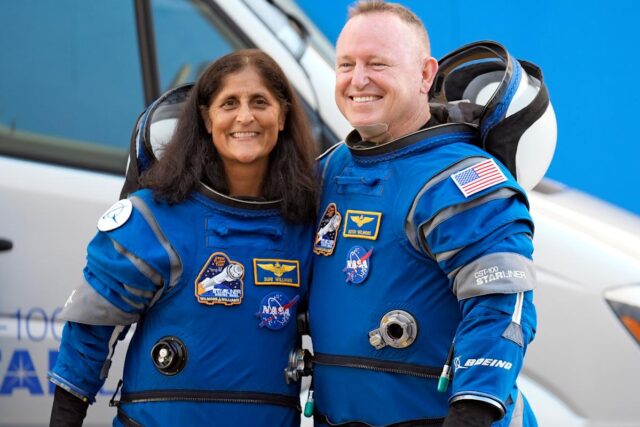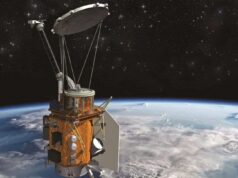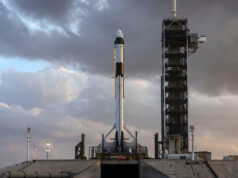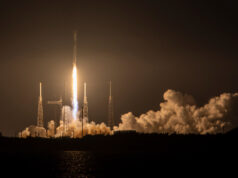
The journey back to Earth after months in the weightlessness of space is a profound transition. For Boeing astronauts, the return will trigger a cascade of physical and psychological sensations as their bodies and minds readjust to gravity’s pull and the familiar embrace of their home planet. Understanding these potential feelings offers a glimpse into the remarkable adaptability of the human body and the complex experience of space travel.
The most immediate and noticeable change for returning Boeing astronauts will be the overwhelming sensation of gravity. After experiencing prolonged weightlessness, their bodies will suddenly be subjected to Earth’s familiar force. This can feel surprisingly heavy, almost as if an extra weight has been added to their limbs. Simple actions like lifting an arm or turning their head might require noticeable effort. Astronauts often describe this initial period as feeling incredibly tired and physically drained.
Accompanying this sensation of heaviness is the challenge of spatial orientation and balance. In space, astronauts rely on visual cues and their inner ear adapts to a gravity-free environment. Upon returning to Earth, this adaptation can lead to what is often called “space motion sickness.” This condition can manifest as dizziness, nausea, and a general feeling of disorientation. The sensory vestibular system in the inner ear, crucial for maintaining balance, needs time to recalibrate to the constant downward pull of gravity. As a precautionary measure, astronauts are typically carried out of their spacecraft and placed on stretchers after landing. This allows them to gradually readjust while minimizing the risk of falls or further disorientation.
Muscle weakness and bone density loss are other significant physical effects of prolonged spaceflight. In the absence of gravity, muscles do not need to work as hard to support the body’s weight, leading to atrophy. Similarly, bones experience less stress, resulting in a decrease in density. Returning astronauts might feel unsteady on their feet and experience muscle soreness as their bodies begin to bear weight again. They will likely undergo a period of physical rehabilitation to regain their strength, balance, and coordination. This process often involves exercises tailored to reactivate gravity-dependent reflexes and movement patterns.
Beyond the physical, the psychological and emotional impact of returning to Earth is profound. The initial moments after landing are often filled with relief and elation. The successful completion of a challenging mission and the anticipation of reuniting with loved ones create a powerful sense of joy. However, this excitement is often accompanied by a period of readjustment to Earth’s sensory environment. The constant noise, the multitude of smells, and the sheer volume of visual information can be overwhelming after the relatively controlled and quiet environment of the spacecraft and the International Space Station.
Astronauts might also experience a mix of emotions as they process their time in space. The “overview effect,” a term used to describe the cognitive shift in perspective that some astronauts report experiencing when viewing Earth from space, can lead to a profound sense of connection to the planet and a renewed appreciation for life on Earth. Conversely, some astronauts might feel a sense of detachment or even a slight melancholy at leaving behind the unique experience of spaceflight and the camaraderie with their crewmates.
The re-entry and landing process itself is an intense experience that can leave a lasting impression. The extreme heat generated as the spacecraft plunges through the atmosphere, the powerful G-forces experienced during deceleration, and the eventual touchdown or splashdown are all significant events that the astronauts will have just endured. These sensations, coupled with the anticipation of returning home, contribute to the overall emotional intensity of the homecoming.
Following their return, Boeing astronauts will undergo thorough medical evaluations and begin a period of rehabilitation. Flight surgeons and medical teams will monitor their physical and psychological well-being, providing support to aid their readjustment. This might include medication to combat space motion sickness, physical therapy to rebuild muscle strength and improve balance, and psychological counseling to help them process their experiences and reintegrate into life on Earth.
The journey back to normalcy is a gradual one. Astronauts need time to re-acclimate to gravity, regain their physical fitness, and readjust to the rhythms of daily life on Earth. Activities that were once routine might initially feel challenging. The simple pleasure of a shower, the feeling of wind on their skin, or the taste of fresh food can take on new significance after months in space.
The return of Boeing astronauts marks not just the end of a mission but also a crucial step in understanding the long-term effects of space travel on the human body and mind. Their experiences will provide valuable data for future space explorations, helping to refine countermeasures and ensure the health and safety of astronauts venturing beyond Earth. The feelings they experience upon their return are a testament to the resilience of the human spirit and the remarkable journey of space exploration.










